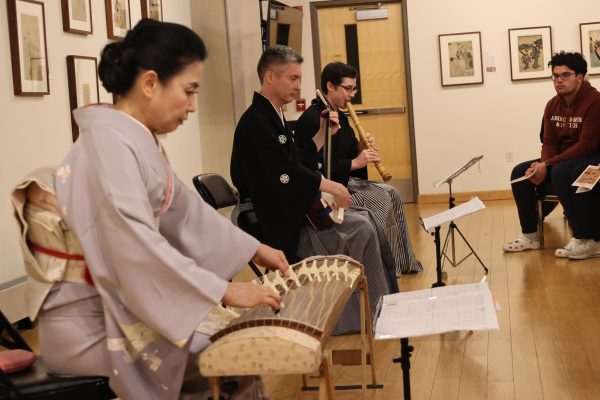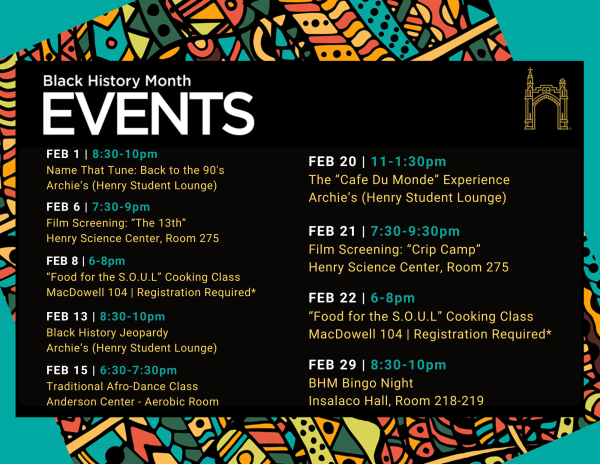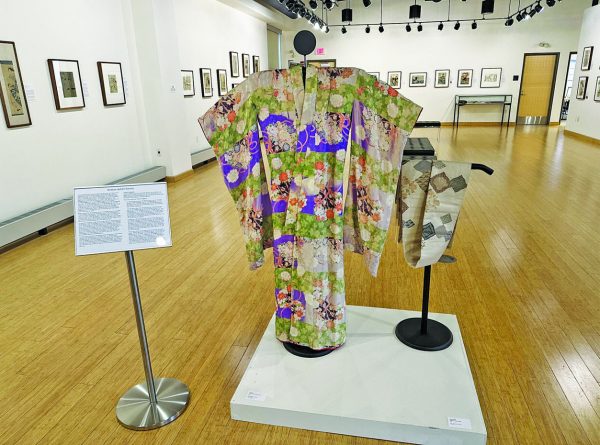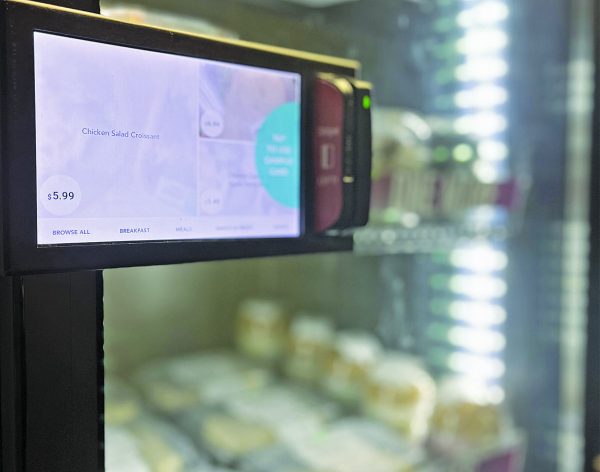Campus Ministry: ‘You Are Linked’ to Human Trafficking
April 20, 2018
Students explored human trafficking during a simulation held by Campus Ministry March 15.
Students received cards that told stories of real people who were trafficking in the U.S. They then visited five different stations to learn more.
“We asked students what did they learn, how could they prevent trafficking, there was all kinds of hand outs,” said Christine Somers, Director of Campus Ministry.
The five stations covered domestic servitude, sweatshops, child labor, sex trafficking and advocacy. Each station detailed the effects of trafficking and what people had to do if they were sold and victimized.
The domestic servitude station explained what victims experience when they are sold into domestic labor. Students read about a scenario of a person in Texas sold to be a servant. Students cleaned windows, ironed clothes, and folded sheets to experience some of the duties of a domestic slave.
At the child labor station, students took a quiz based on common consumer products placed on a table. They learned how child labor is used in many products that people regularly buy, such as chocolates, cell phones and coffee.
The second part of the child labor station required students to carry bricks across the room and build a wall.
“I was trying to be tough on them to kind of give them the feel of the conditions that [children] work under,” said Sean Farry, Campus Minister.
Students explored common misconceptions in the sex trafficking station.
“We talked about some misconceptions around sex trafficking and sex trafficking in the media,” said Lindsey Riddell, community outreach coordinator. “The movie ‘Taken’ is where everybody’s minds went.”
Students also watched a video about a local girl who was sold into sex trafficking and survived.
At the sweatshop station, students sewed hand warmers to get a feel for the repetitive, exhausting work.
At the advocacy station, students reflected on what they learned, and some signed letters about the trafficking problem, which were sent to Congressman Lou Barletta and Senators Bob Casey Jr. and Pat Toomey.
Out of the 120 students who attended the event, 75 provided signatures. Farry said she hopes the letters persuade officials to pass a bill that would hold accountable companies and/or supply chains that use child labor.
“Companies which sell us products everyday profit off the labor of children,” Farry said. “They have a responsibility to hold their suppliers accountable, and unfortunately many companies will not take this responsibility to heart because the profits are too big.”
Farry said the first step to fighting human trafficking is education, and she said the second step is outreach to officials.
For Somers, Farry and Riddell, the most important thing for students to get out of the simulation is education and awareness.
Riddell said while many students believe they are not involved in human trafficking, they are by the things they do, the things they purchase, who they interact with and the environments they live in.
“You are linked to trafficking in some way without realizing it,” Riddell said.
Goods that involve the most child labor are gold, bricks, cotton shirts, sugarcane, coffee, smartphones and makeup, Farry said. Somers, Farry, and Riddell want people to know that when they buy these goods and products, they are, in a way, supporting child labor and trafficking.
Campus Ministry staff wants people to be aware of what human trafficking is and how to look for the signs.
One of the most common misconceptions, according to Somers, is that people do not think that it can happen to them or happen locally.
“It’s a misconception that it couldn’t happen in one of our local high schools,” said Somers. “Maybe a younger man pretends that they are going to have a relationship and he ends up being a trafficker.”
Through education, students can learn what they signs of human trafficking are and they can also learn how to stop it, Riddell said.
Farry said students can learn more about trafficking through app, including “Sweat and Toil,” which provides statistics on products that use labor and exactly where workers are located. “It’s Good On You” is an app that specifies clothing made with forced labor, she said.
“There are some good resources out there that people could educate themselves on,” said Farry.






